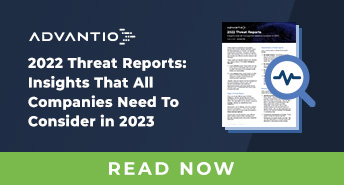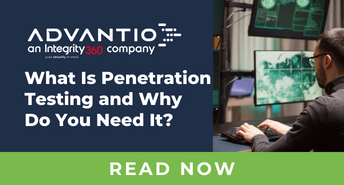What is Cyber Threat Intelligence (CTI)?
Whenever I’m asked to explain the concept of Cyber Threat Intelligence (CTI) and its significance in enhancing defense mechanisms, I often start with this example: Do you choose to walk blindfolded into a dark room, leaving yourself vulnerable to unexpected attacks? Or do you prefer to illuminate the room to defend yourself by seeing the attacks when they come in?
The usage of Cyber Threat Intelligence (CTI) in cybersecurity is essential to enhance defense against cyber threats. This blog post presents a comprehensive overview of Cyber Threat Intelligence, covering its background, advantages, variations, and the intelligence cycle involved. Additionally, we will explore how Digital Risk Protection Services (DRPS) can strengthen your cybersecurity posture.
Cyber Threat Intelligence plays a crucial role in understanding and mitigating cyber risks that can harm individuals' and organizations' security. By gathering and analyzing information from various sources, it enables the identification of potential threats and their tactics. With Cyber Threat Intelligence, organizations can proactively enhance their cybersecurity, protect their systems and data, and make informed decisions to prevent attacks. It offers valuable insights into emerging threats, vulnerabilities, and potential targets, empowering organizations to take proactive measures and maintain their security.
The US National Institute of Standards and Technology (NIST) defines Threat Intelligence as "aggregating, transforming, analyzing, interpreting, or enriching threat information to provide the necessary context for decision-making processes."
Sergio Caltagirone (former Vice President of Threat Intelligence at Dragos and a renowned expert in threat intelligence) offered an insightful definition of (Cyber) Threat Intelligence. He characterized it as the outcome of an analytical process that integrates hypothesis-led and evidence-based analysis from multiple data sources, providing valuable insights into adversaries and their malicious activities. This knowledge empowers defenders and organizations to improve their security decision-making process. According to Caltagirone, Threat Intelligence should tackle the "3 Question Rule" to identify:
- The threat by answering the questions: who (adversaries are), what (adversaries use), where (adversaries target), when (adversaries act), why (adversaries attack), and how (adversaries operate).
- The potential impact on an organization if the threat materializes.
- The actions that can mitigate the threat in both the short and medium term.
The concept of cyber threat intelligence is not a new one. Military and government intelligence operations have long gathered and analyzed information about potential threats to inform strategic decisions. With the emergence of the internet and the subsequent rise of cybercrime, these intelligence principles were adapted for the digital realm. In 2011, Hutchins, Cloppert, and Amin's pivotal whitepaper, "Intelligence-Driven Computer Network Defense Informed by Analysis of Adversary Campaigns and Intrusion Kill Chains," marked a turning point in the history of CTI. It introduced the concept of intelligence-driven computer network defense, analyzing adversaries and their objectives within a kill chain model to assess intrusions.
David Cooney, a 40-year intelligence veteran and writer, highlighted the fact that competent threat actors actively gather intelligence on targets and utilize the information to formulate attack plans that exploit identified weaknesses. Attackers leverage intelligence to their advantage. Wouldn't it be advantageous if we adopted the same approach?
Cyber Threat Intelligence (CTI) empowers organizations and security analysts with numerous benefits. It furnishes us with actionable information regarding potential threats, enabling proactive defense measures. CTI plays a pivotal role in incident response, facilitating the identification of attack patterns and the formulation of effective response strategies. Additionally, CTI enhances our efforts in vulnerability prioritization, particularly concerning CVEs associated with targeted sectors. Furthermore, CTI promotes collaboration and information sharing among security professionals, exemplified by platforms like the MITRE ATT&CK knowledge base and the MISP Threat Sharing open-source threat intelligence platform.
- Strategic CTI provides a high-level view of the threat landscape, informing decision-makers about emerging trends and long-term strategies.
- Operational CTI focuses on understanding the tactics, techniques, and procedures (TTPs) of threat actors, enabling organizations to anticipate and counter specific threats.
- Tactical CTI involves the identification of specific indicators of compromise (IoCs) such as IP addresses, domain names, and malware hashes (most of the time, tactical CTI involves machine-to-machine integration).
CTI production is guided by the Intelligence Lifecycle. The process consists of five stages:
- Planning and Direction: Defining intelligence requirements and planning the intelligence gathering process.
- Collection: Gathering information from various sources.
- Processing: Converting collected information into a format suitable for analysis.
- Analysis: Interpreting processed information to produce intelligence.
- Dissemination: Distributing intelligence to stakeholders.
When discussing CTI, three key terms stand out - data, information, and intelligence. These terms hold significance in the intelligence cycle as they contribute to the transformation of raw inputs into actionable insights. Data represent unprocessed facts that provide hints about an event. It serves as the initial stage for analysis. In the cybersecurity realm, data may include IP addresses, domain names, malware hashes, system file changes, and other indicators of compromise (IoCs). However, raw data alone does not necessarily indicate a compromise. It resembles a puzzle piece awaiting placement in the correct context.
After accumulating a substantial amount of raw data, the next step involves categorizing it into relevant groupings. This task of transforming data into a well-defined storyline is known as information. It resembles the process of piecing together a puzzle to construct a cohesive image. However, the image lacks completeness without context and analysis.
The final stage in the intelligence cycle involves transforming information into intelligence. Intelligence refers to the interpretation and analysis of information, typically conducted by a human analyst, to support decision-making. In the realm of cyber threat intelligence, this process encompasses predicting potential cyber-attacks, comprehending threat actors, and implementing proactive measures.
By implementing a robust Cyber Threat Intelligence (CTI) program, organizations can gain numerous advantages, as it enhances their ability to anticipate, prepare for, and respond to cyber threats. CTI also aids in the understanding of an organization's risk profile, enabling effective risk management and alignment of security strategy with business objectives. Cyber Threat Intelligence is beneficial for every organization.
DRPS, a comprehensive solution, protects organizations from digital risks across all environments, from the surface web to the deep/dark web, including dark forums and paste sites. It actively monitors for threats to brand reputation, data breaches (including stolen passwords and usernames), and other cyber threats such as intellectual property leaks and typosquatting. While DRPS primarily focuses on identifying and mitigating digital risks online, it's important to note that relying solely on DRPS can result in a narrow view of the threat landscape.
To achieve comprehensive threat intelligence, we must take a holistic approach that goes beyond relying solely on DRPS. While DRPS data is valuable, we need to gather information from various sources such as internal network logs, threat feeds, open-source intelligence (OSINT), and human intelligence (HUMINT). This diverse range of data allows us to gain a more complete understanding of the threat landscape, empowering organizations to anticipate and respond to threats effectively. Additionally, it's crucial to analyze and process the raw data collected from these sources to generate meaningful and actionable threat intelligence.
Developing a robust Cyber Threat Intelligence (CTI) program offers numerous benefits across various fields, but it can present challenges during implementation. To overcome these challenges, organizations need to take proactive steps. This includes setting a clear strategy, recruiting resources as CTI analysts, defining an effective analysis methodology, establishing processes for collecting high-quality information, promoting internal collaboration, investing in threat intelligence platforms (TIPs), leveraging automation, and delivering actionable insights that provide real value. While this process may involve significant costs and risks of failure, organizations can strengthen their security posture and withstand cyberattacks by considering a Threat Intelligence Managed Service as the optimal choice.
Get in touch to discover how Advantio's Security Threat Intelligence service leverages the power of automated Dark Web monitoring, data breach detection, and tailored threat intelligence, while integrating our expert security, intelligence, and SOC services, to benefit your organization.

References:














Comments